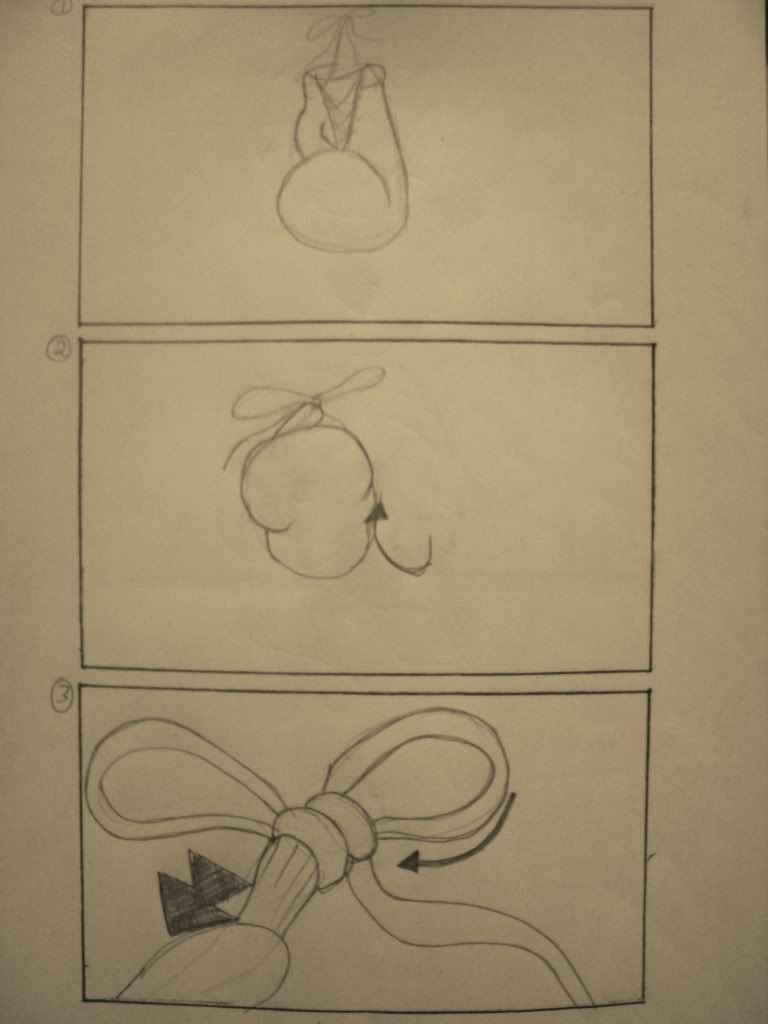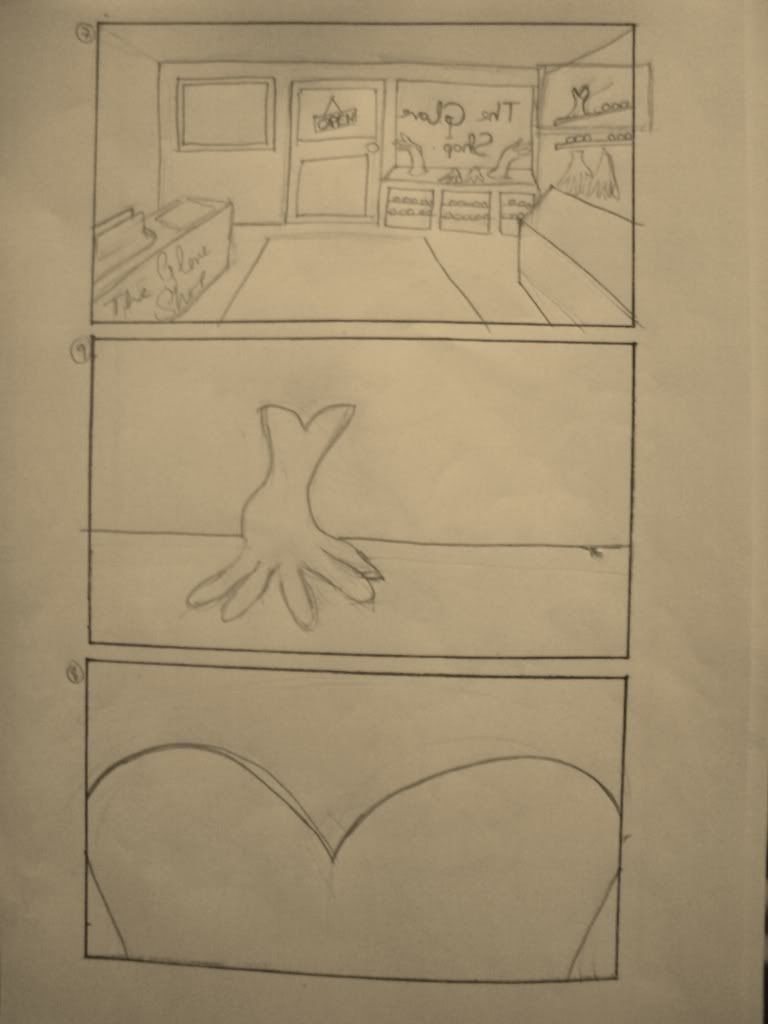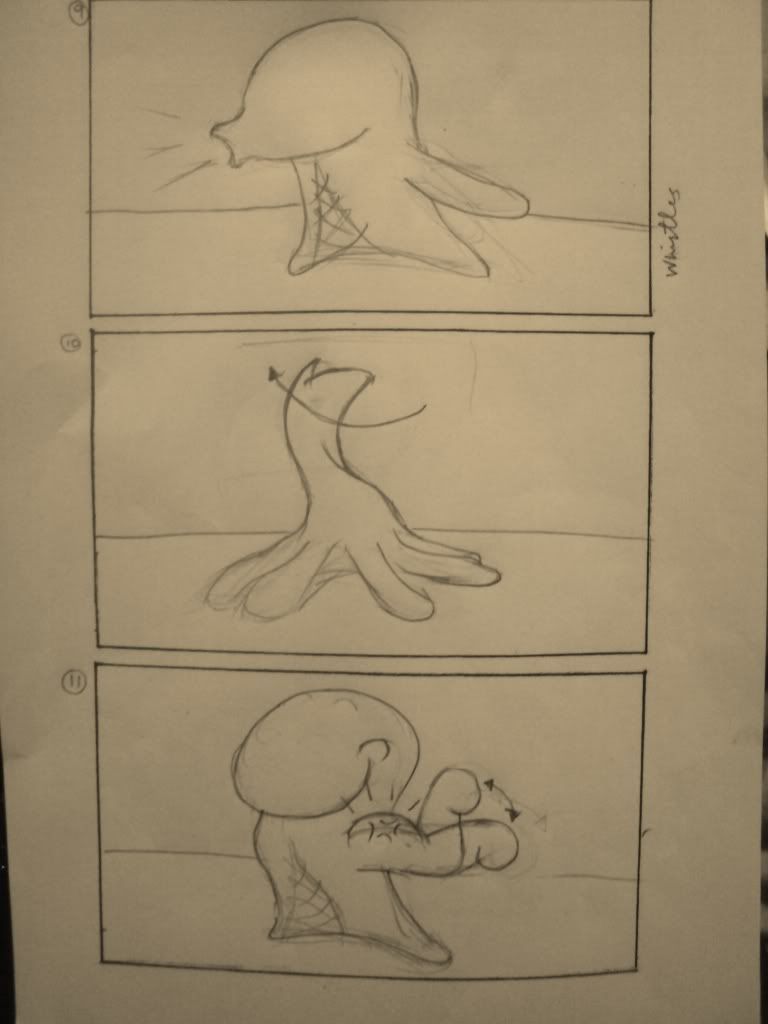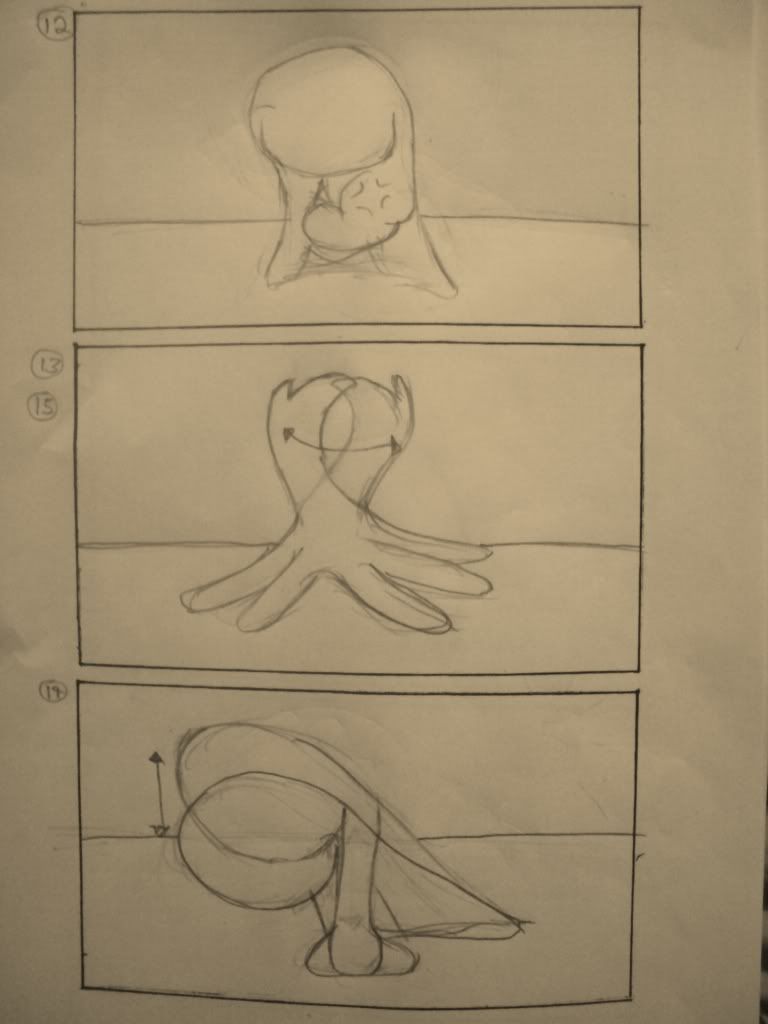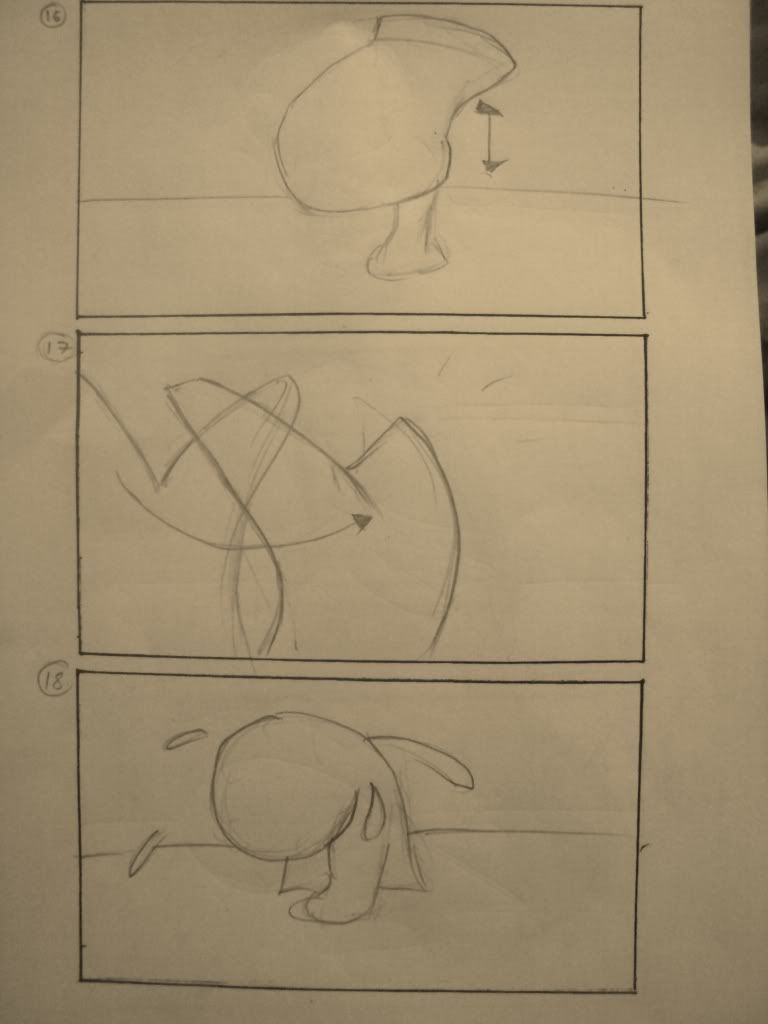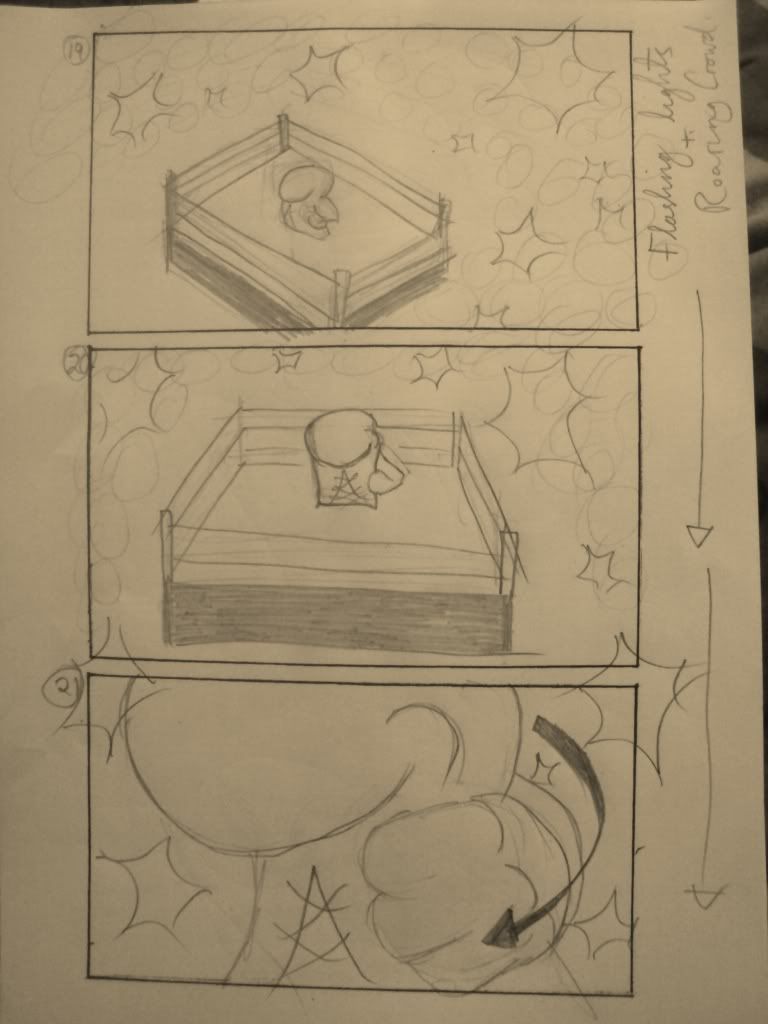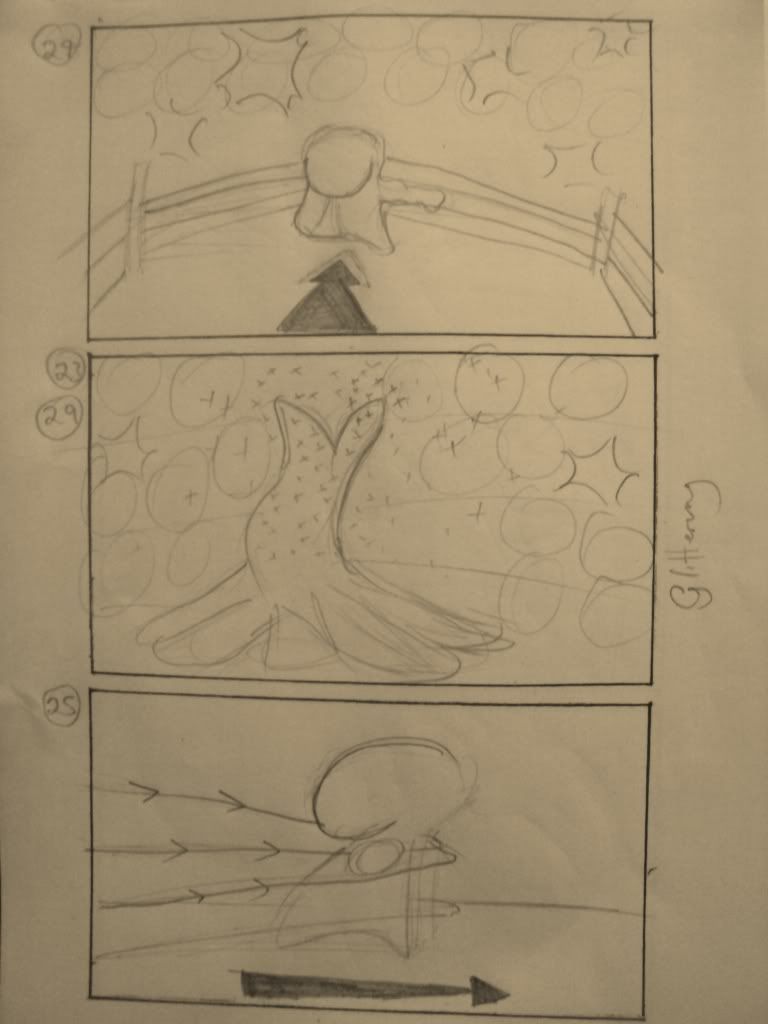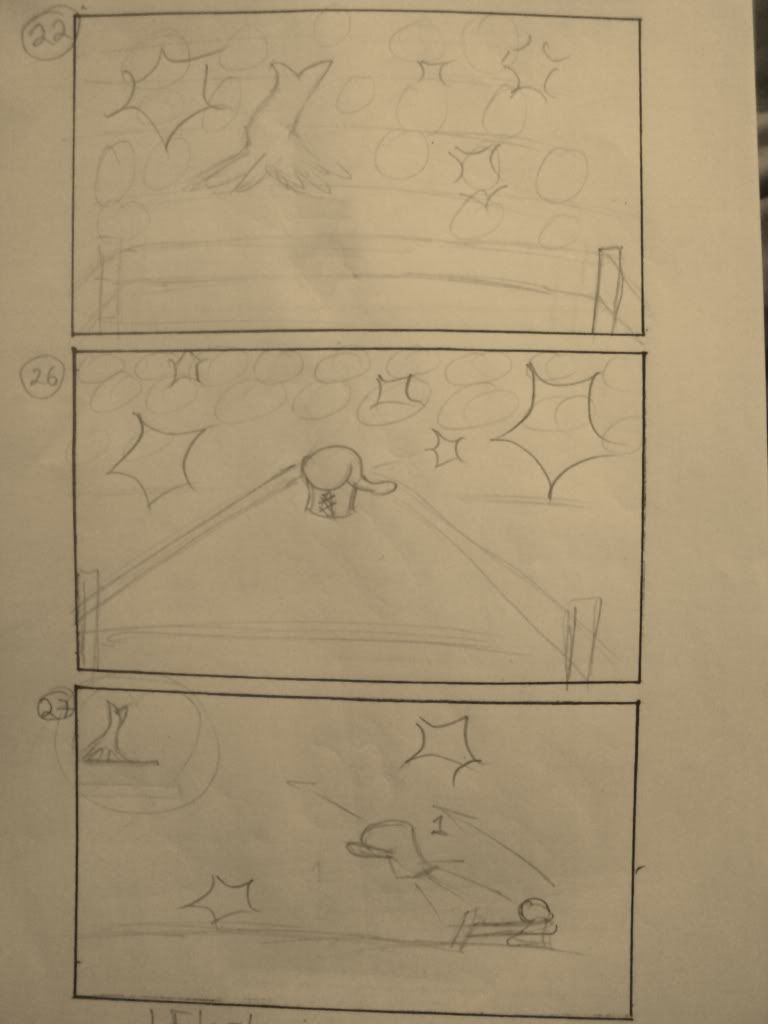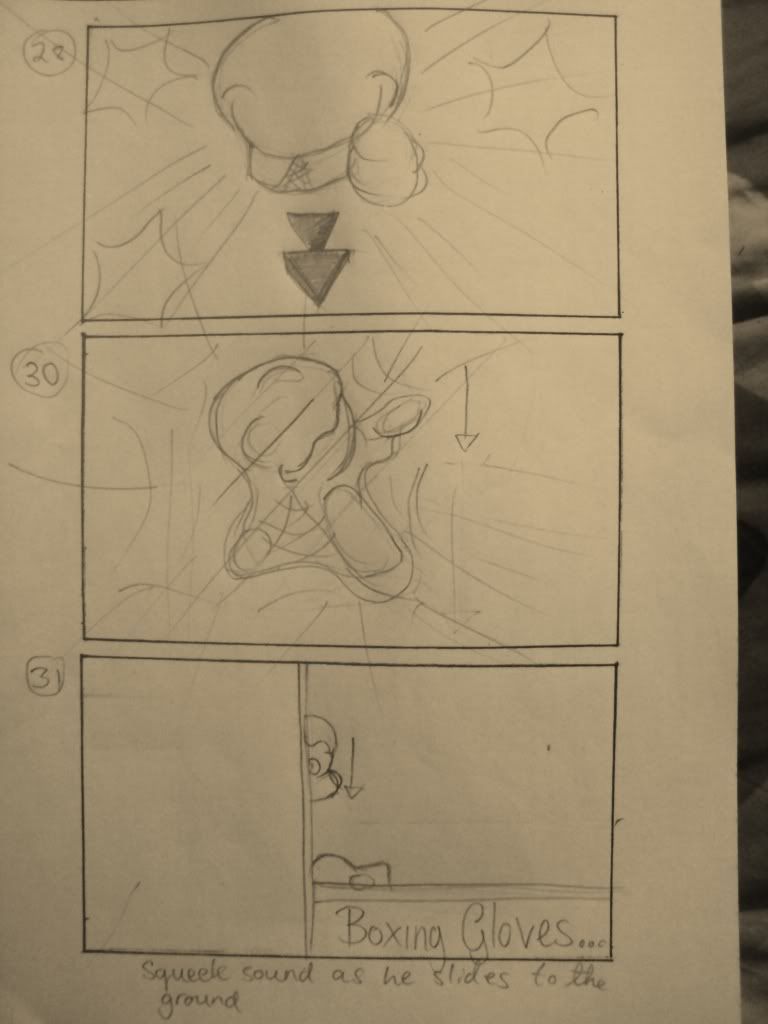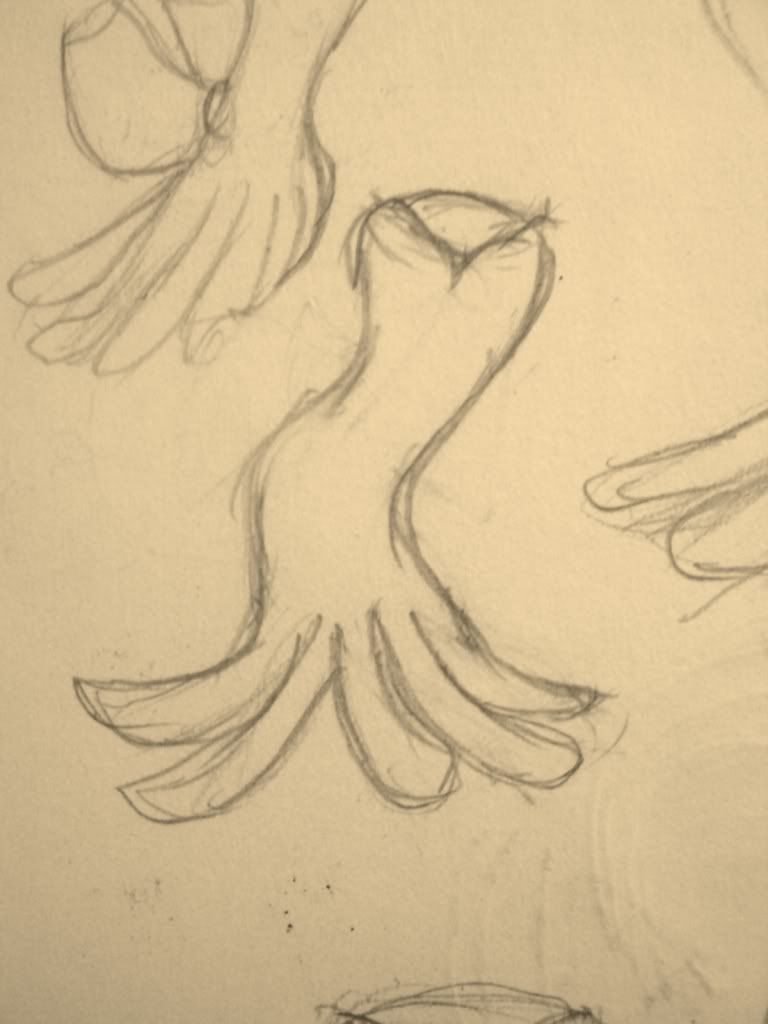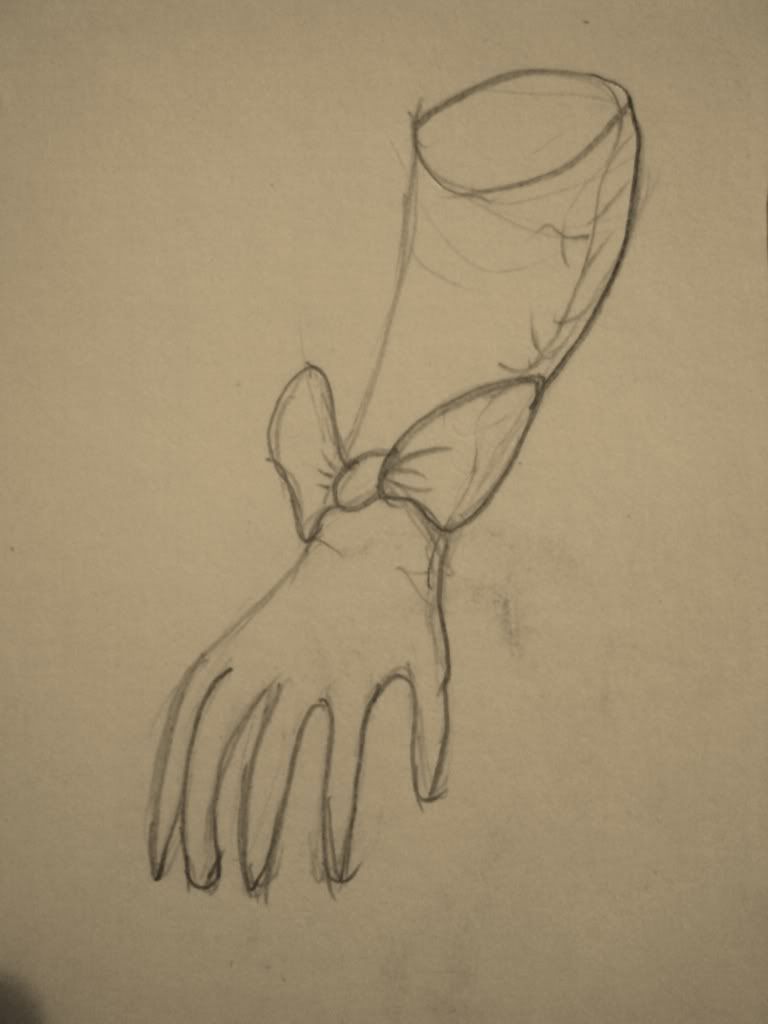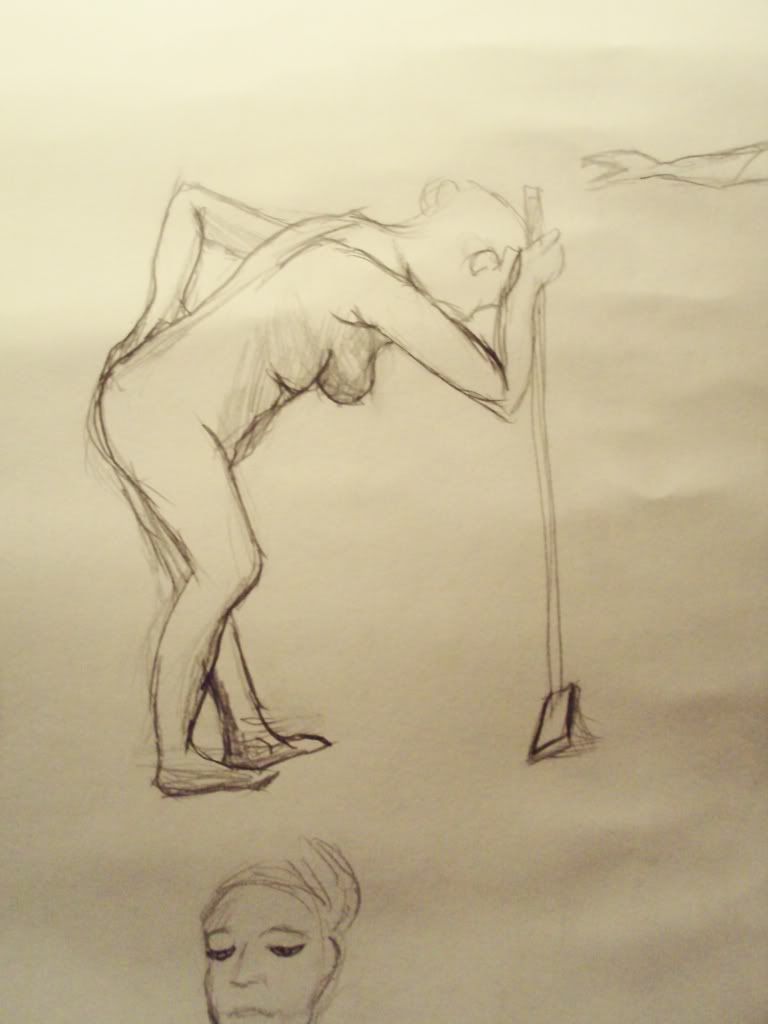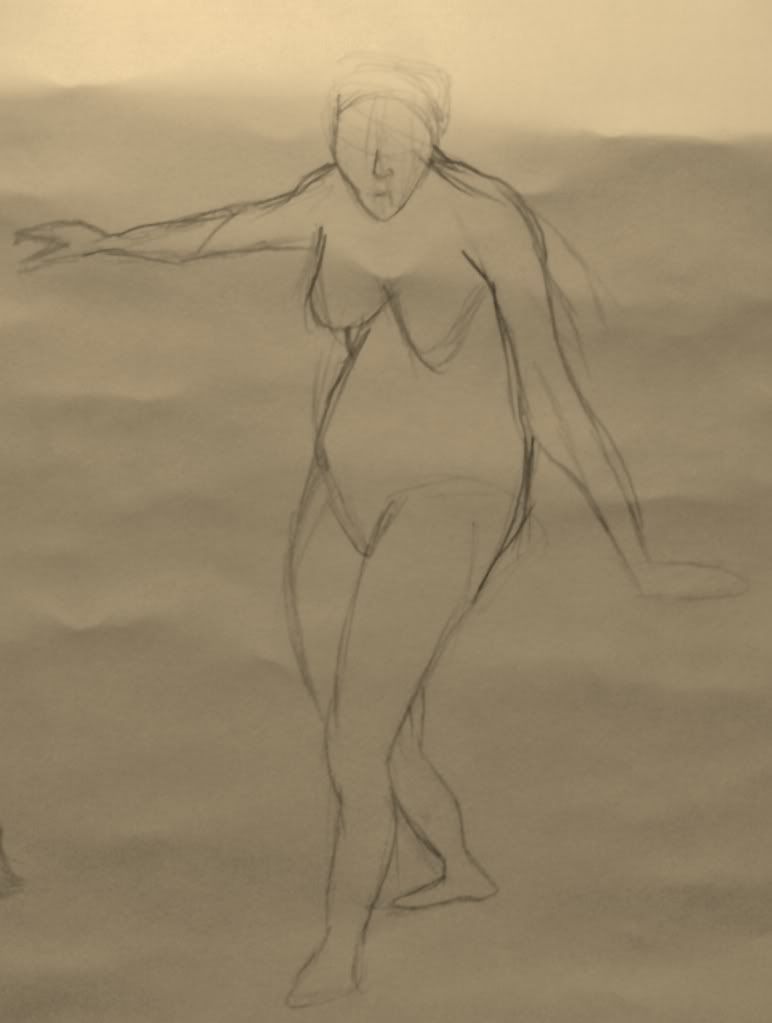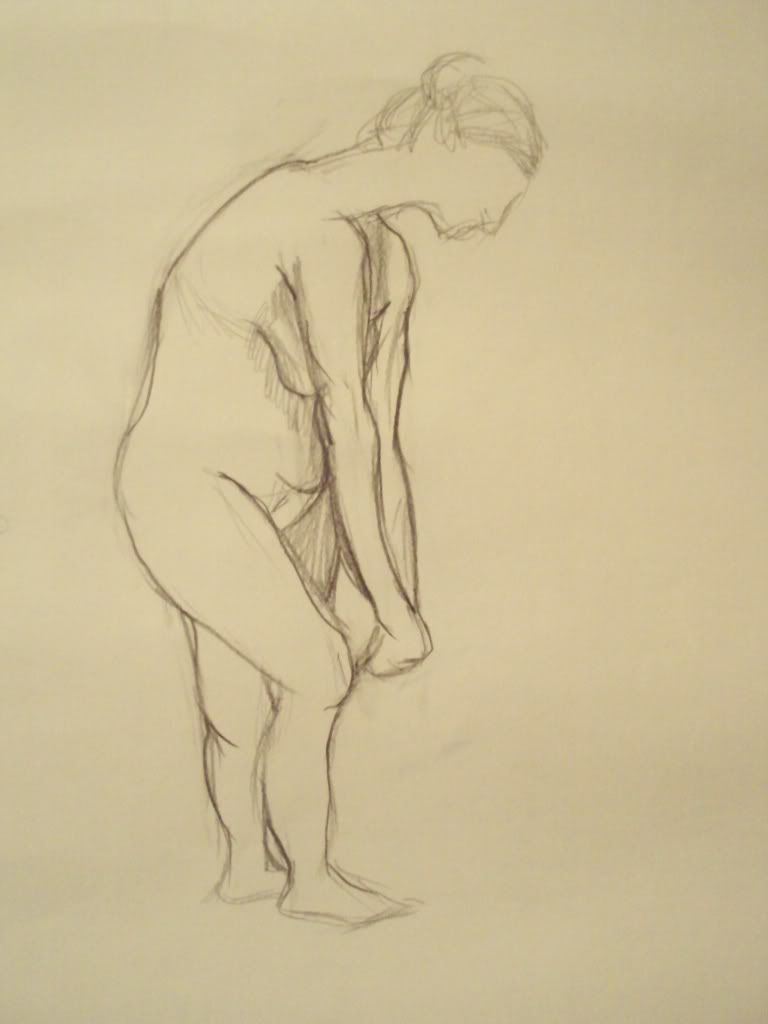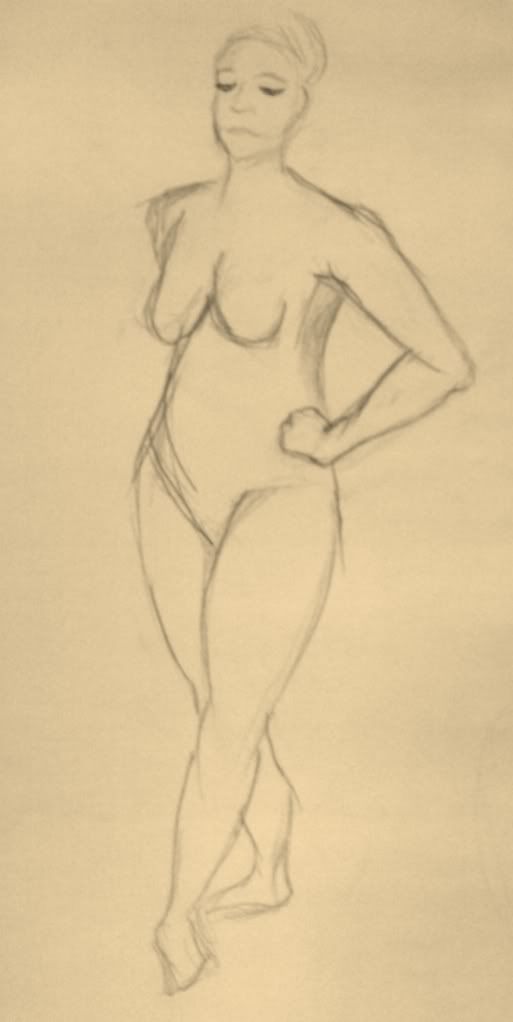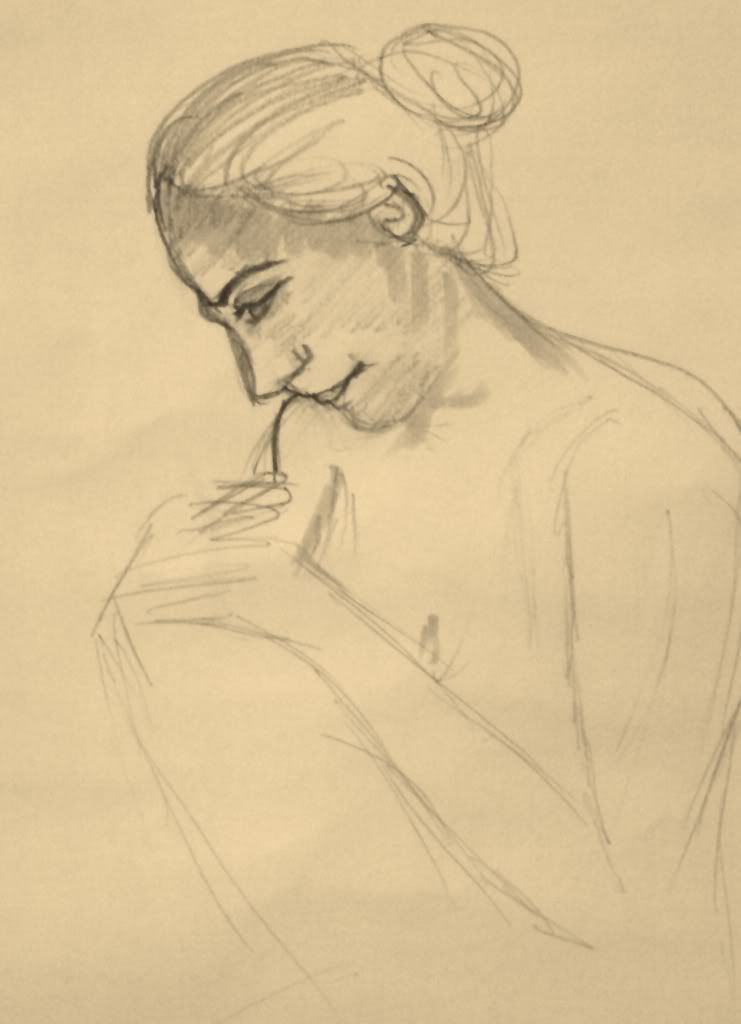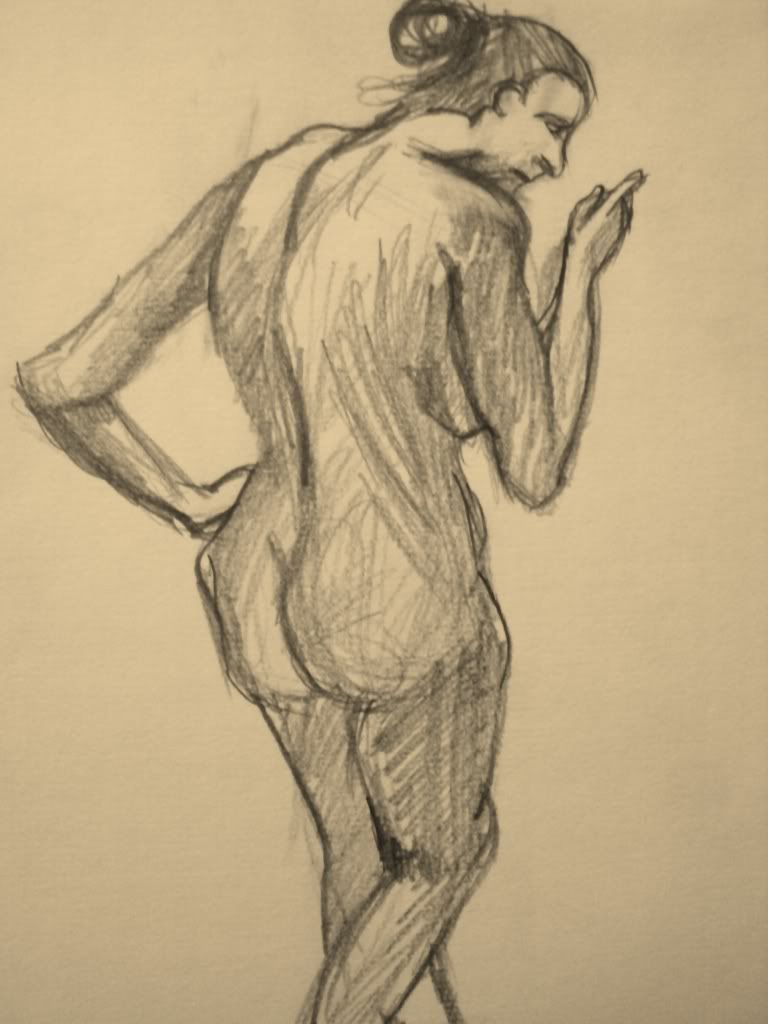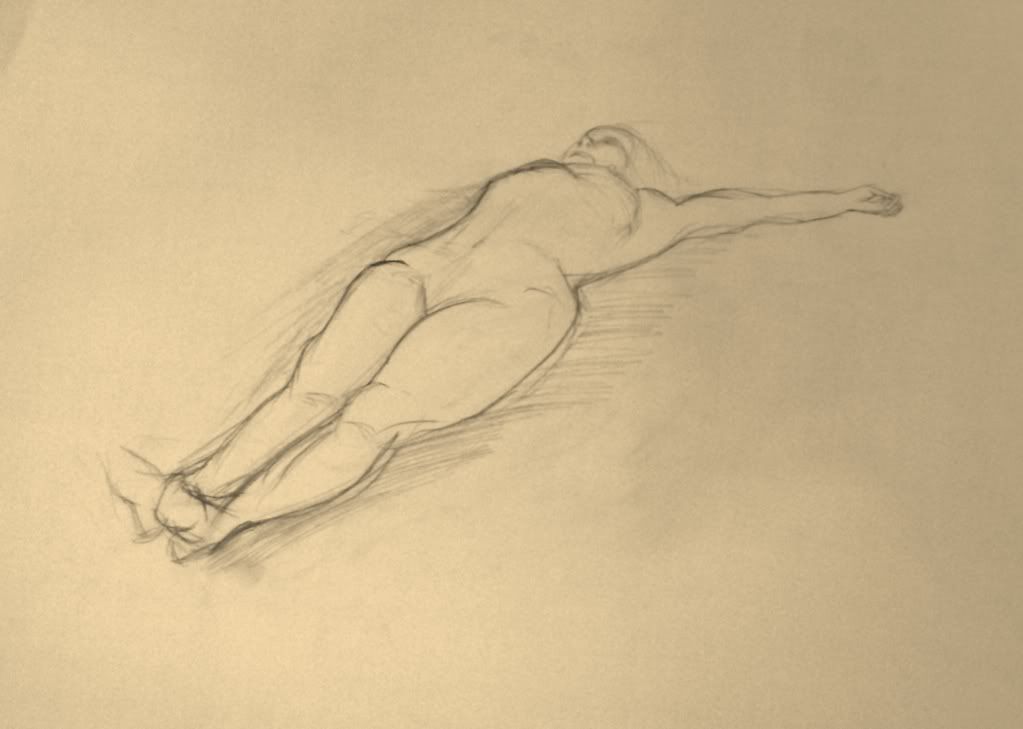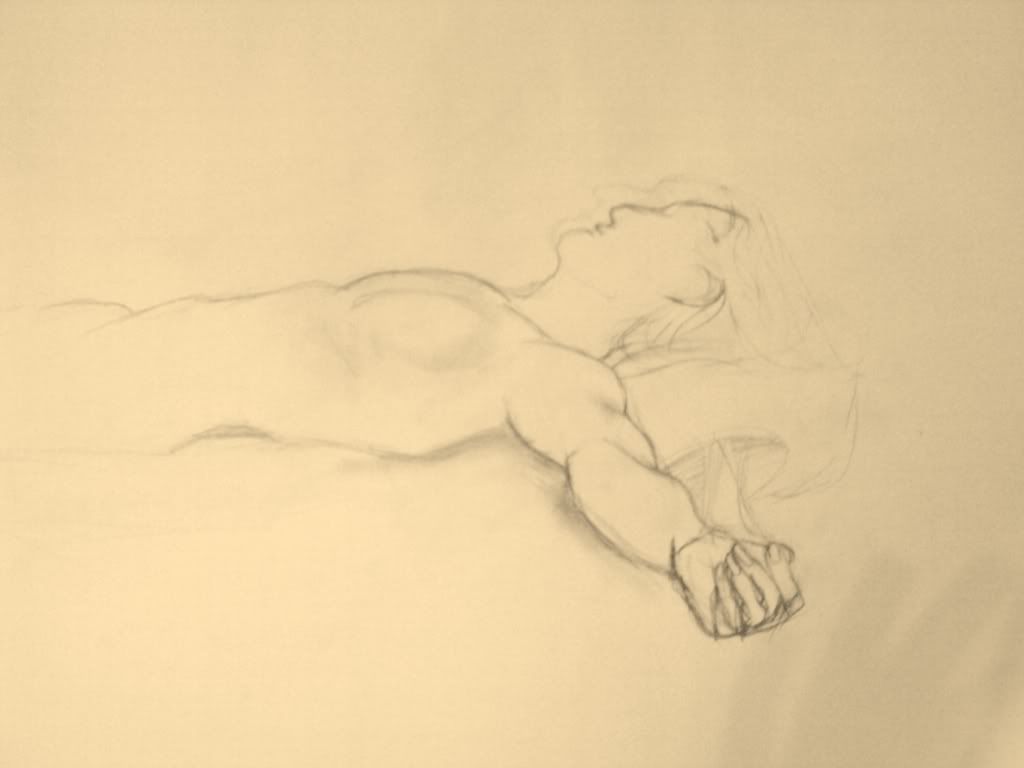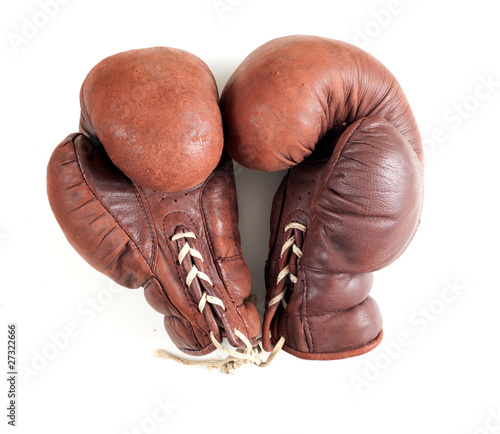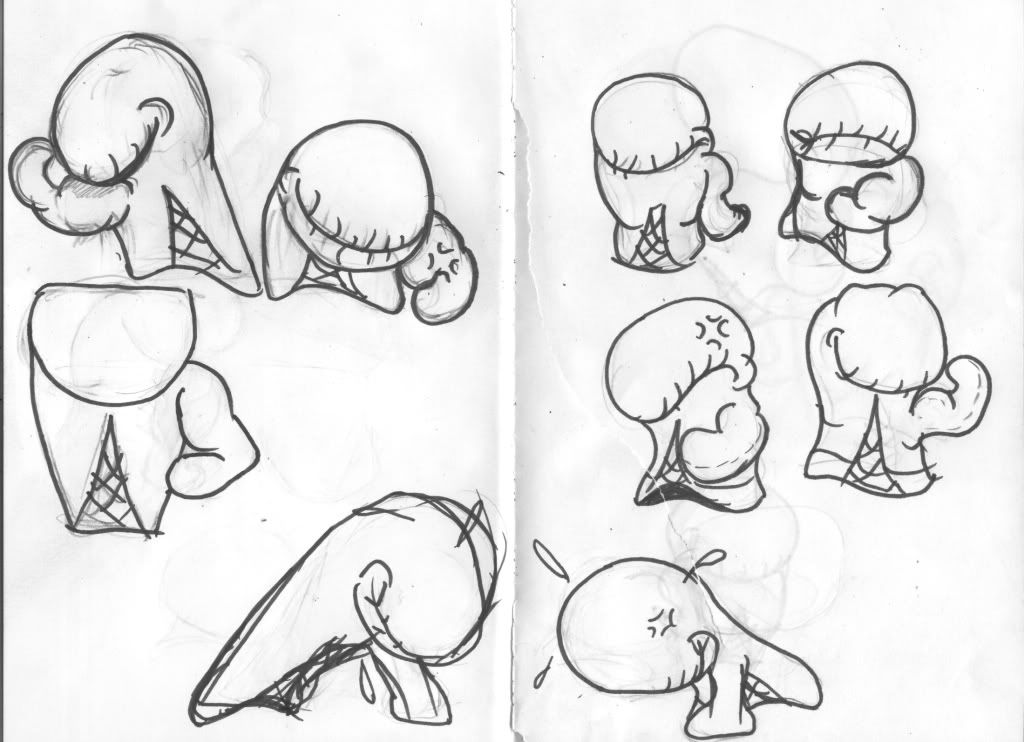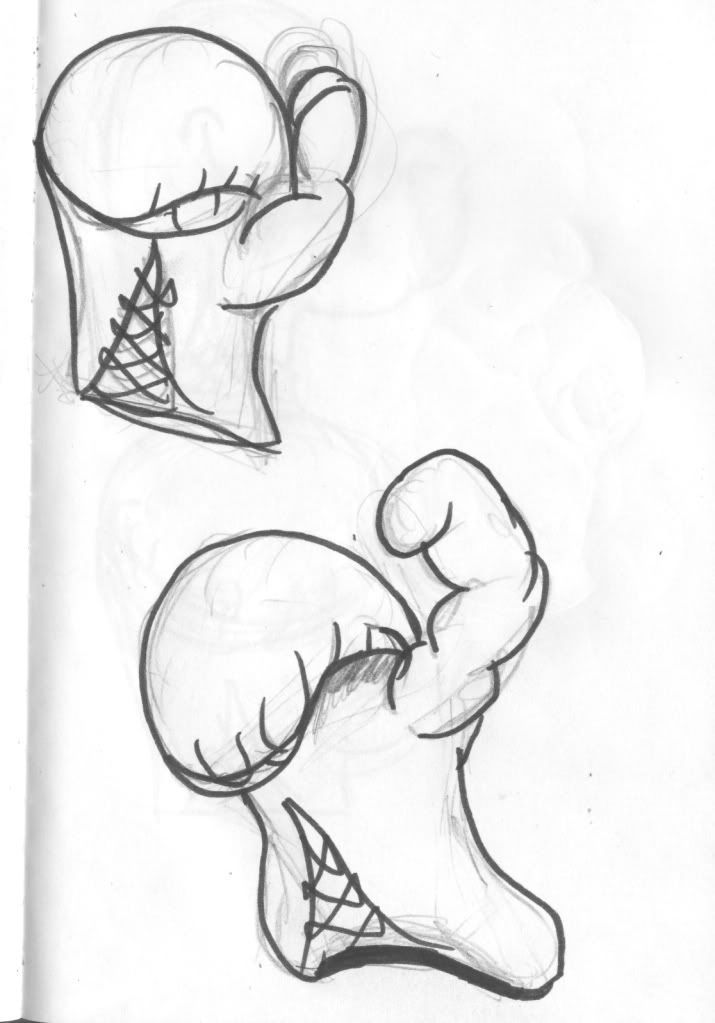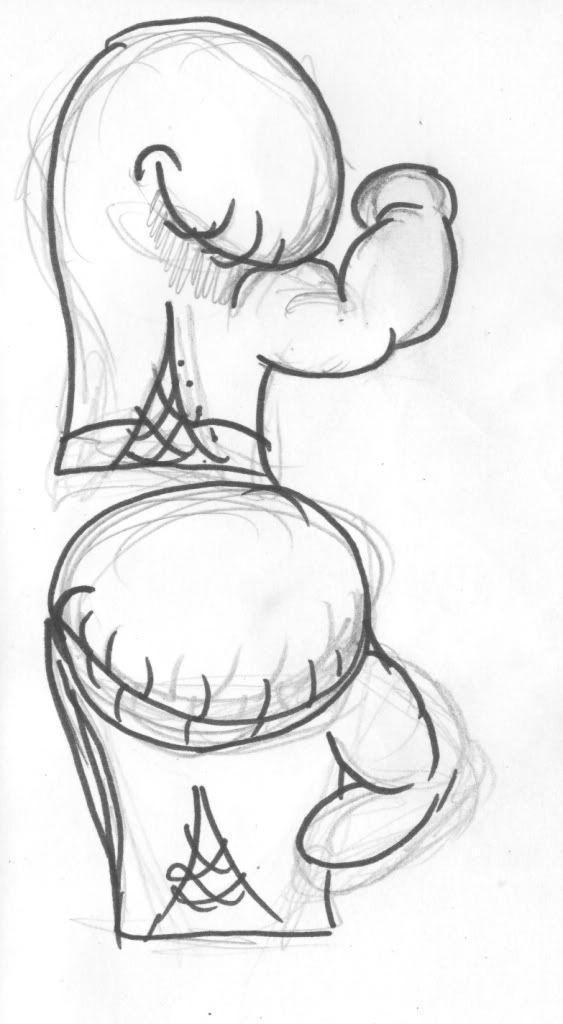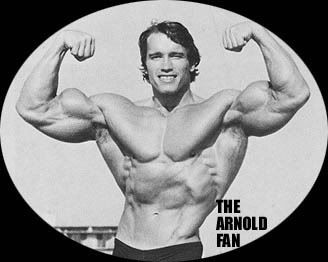Hand stand has an arm bend now it looks a lot better.
Thursday 31 March 2011
Animation in Progress (Frames 13-16)
In this test I am happy with the animation apart from the jump I think I put too many frames in so it looks too slow... So I took a couple out to see the results and it looked alot better. Also I am going to re-work the hand stand push-ups and put a bend in his arm it would look more like he is moving.
Wednesday 30 March 2011
20 Seconds of Final Animation!
Gathering up all the frames I have done so far (128) all scaned and edited in premier has come to 20 seconds of animation!! I played around to get the timings and repeating frames i had to loose a couple of drawings just to make it flow better, but it was worth it. It is coming together nicely :) Just need to keep going!!!!
Final Animation In Progress (Frames 6-12)
Currently at 129 Frames but some frames are repeated more than once and some are held out for a couple more frames. According to my animatic including the introduction sequence I should have 31 seconds of my animation completed. However the next couple of sequences are a bit more diffucult escpecially the 'dream sequence' which will take me a lot longer to do.
Tuesday 29 March 2011
Final Animation So Far! (Frames 1-6)
From my animatic I have worked out how many frames i need for each frame according to my animatic i have yet to type up but i have worked out a total of 555 frames (at 12.5 frames per second) for the whole animation.
From my animatic this is the first 6 frames (minus the intro) which is a total of 92 frames already. Progress is slow but I am enjoying the process and watching it come to life in this preview is EXTREMELY satisfying!
I will have to make a few tweaks and hold out a few more of the poses towards the end but i am happy with the overall movements and transtitions between the frames.
Monday 28 March 2011
Normal Walk Take 2
Meg sugested that I put the bend back in the arms because some of the frames in my last walk in some frames he had a joint and others he didnt. I just went back through the frames to put the jionts back in, it has actually made a big difference!
Sunday 27 March 2011
Animatic (Minus Intro)
The first couple of frames are going to be the camera exercise from Meg's class which should make up the minute but I cant put it all together till I get into uni. Anyway this is the animatic after the establishing shots og the outside of the glove shop.
Storyboard
Finally got here ready for the animatic asap! It made me smile drawing it so it should be funny when it comes together.
First couple of frames I am going to use the camera exercise in Meg's class as it would establish the setting for the story.
First couple of frames I am going to use the camera exercise in Meg's class as it would establish the setting for the story.
Female Glove Concept
Thursday 24 March 2011
Tuesday 22 March 2011
Animation Timeline: Lotte Reiniger
'Cinderella' (1922) was one of Reiniger's first animations, created entirely from intricately cut-out pieces of paper built up in multiple layers. In the opening of her animation she shows a hand cutting out a character from a piece of paper with scissors paying homage to her hard work and talent to bring the story to life. "Just as any storyteller provides an introduction that bridges the gap between the real and story worlds, so Reiniger draws us in by showing how she brings her figures to life." Audiences appreciate the animation for the extravagant detail achieved and it works beautifully depicting the fairy tale genre of story telling. The characters are cleverly designed in there shape and size that audiences can easily distinguish who is who in the story. Also the detail in the cutting clearly defines objects to understands what is going on in the action.Each scene is framed in an oval in which the characters move which appears almost like a light shining in the wall casting a elegant ghost like shadows acting out the fairly tale. The darkness of the shadow create a Gothic feeling of style.
 |
| Fig. 1 - Portait photograph of Lotte Reiniger (1899–1981) |
 |
| Fig 2 - Screen shot from 'Cinderella' (1922). |
List of Illustrations
- Fig. 1 - Portait photograph of Lotte Reiniger. Online at: http://lolitasclassics.blogspot.com/2009/06/lotte-reiniger-1899-1981.html
- Fig 2 - Screen shot from 'Cinderella' (1922). Online at: http://wondersinthedark.wordpress.com/2010/12/21/3-cinderella/
- North, D (2009). Lotte Reiniger's Cinderella (1922). http://drnorth.wordpress.com/2009/10/20/lotte-reinigers-cinderella-1922/ (Accessed on the 22.03.11)
Animation Timeline: Winsor McCay
 |
| Fig. 1 - Portrait of Winsor McCay (1871 - 1934) |
 |
Fig. 3 - A screen shot from 'How a Mosquito Operates.' (1912) |
'How a Mosquito Operates' was McCay's second animation, he showed that animation could entertain audiences with a simple storyline of a mosquito trying to feed while a man feeds. He explores visual gags that animation can offer such as the mosquito trying to squeeze through the tiny gap in the window on top of the door when in reality they would fly straight through. He also brings charm and character to the insect by giving it a mini brief case and top hat as he lifts his hat to greet the audience (Fig. 3).
 |
| Fig. 2 - Poster for Winsor McCay's Gertie : The Wonderfully Trained Dinosaur (1914.) |
"...McCay combined the lessons of his earlier two films in order to create a character who is animation's first cartoon personality." (L, Rabinovitz, 2011) Moving on from the mosquito in 'How a Mosquito Operates' He created Gertie: The Wonderfully Trained Dinosaur, that is when she does not misbehave during her performance, which wonderfully shows off the personality possibilities animation has to offer. McCay alone produced over 10,000 frames for this feature, each one drawn on to there own sheet of paper including backgrounds, because of animation being in its early stages the use of transparent animation cells had not been developed yet. Cartoon historian Leonard Maltin "For years Gertie had been named in histories as the first animated cartoon. With all its impact, it might as well have been." (Erickson, H) Believable personalities like Gertie's went on to inspire other animators particularly having a great impact on the work of Walt Disney which brought huge success in creating memorable character personalities. Even in today's modern animations a strong character personality is a key componant to creating a successfull outcome and McCay sparked this idea with Gertie.
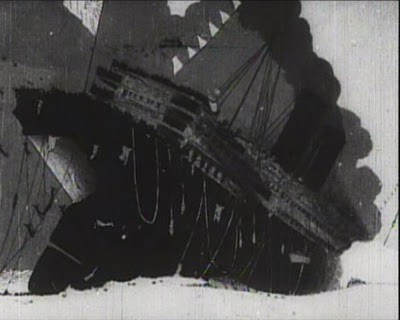 |
| Fig. 4 - Screen shot from 'The Sinking of the Lusitania' (1918) |
The style of this animation is done in a documentary style depicting the bombing and sinking of the warship Lusitania. McCay's grapical style becomes almost realistic depicting the horrors of the event that had been described. Again like his previous animations every frame was hand drawn however he used cels animation. Even by todays standards the smoke and the water's waves are impressive and beautifully done. Watching the animation shows similarities reflected in 'Titanic' in a critics review he blieves "...Cameron was at least inspired by some of the images here, particularly the way the life boats lower to the ocean and the images of bodies plummeting off the ship's stern." (Unknown, 2010)
List of Illustrations:
- Fig. 1 - Portrait of Winsor McCay. Online at: http://bearalley.blogspot.com/2009/09/winsor-mccay.html
- Fig. 2 - Poster for Winsor McCay's Gertie : The Wonderfully Trained Dinosaur. Online at: http://www.flickr.com/photos/cabinet/2183157738/
- Fig. 3 - A screen shot from 'How a Mosquito Operates.' Online at: http://www.weirdwildrealm.com/f-winsor-mccay.html
- Fig. 4 - Screen shot from 'The Sinking of the Lusitania' (1918.) Online at: http://animationreview.wordpress.com/tag/winsor-mccay/
Bibliography:
- Erickson, H. AllMovie, Gertie the Dinosaur. http://www.allmovie.com/work/gertie-the-dinosaur-151281 (Accessed 22.03.11)
- Rabinovit, L. (2011) Film Reference, McCay, Winsor. http://www.filmreference.com/Writers-and-Production-Artists-Lo-Me/McCay-Winsor.html (Accessed 20.03.11)
- Unknown (2010). 100 Years of Movies. http://100yearsofmovies.blogspot.com/2010/09/sinking-of-lusitania-1918.html. (Accessed 22.03.11)
Animation Time Line: Norman McLaren
 |
| Fig.1 - Norman McLaren |
"Abstract to the extreme, the latter synchronises a series of heterogeneous sounds to a ballet of blue dots executing evermore complex patterns as the soundtrack’s rhythm changes." Working straight on to the celluloid film he created a series of patterns and shapes that would move in harmony with the music. When the music reaches a crescendo the patterns movement would become faster between frames. The Layers of lines on top of the colours pick up the different layers within the music creating a visual metaphor of layers with the music. At times the screen becomes cluttered with pattern and colour that it becomes an eye sore, however when the music settles the relationship between the movement and the music can really be established. "I see movement, rather than specific images. . . . Movement is my basic language." (Sharman, L.F)
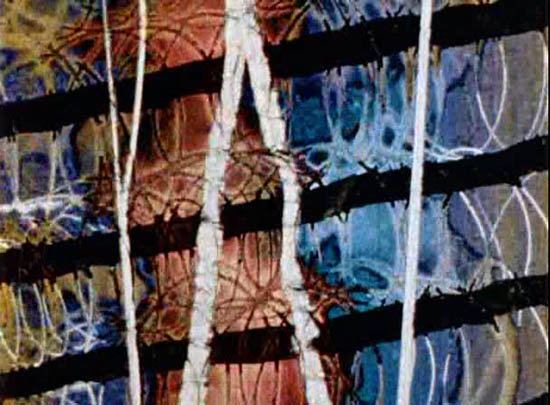 |
| Fig.2 - Screen shot from 'Begone Dull Care' (1949) |

Fig.3 - Screen shot from 'Lines Horizontal' (1962)
Another one of McLaren's animations that isnt soft on the eyes, but it is fasinating to watch how our brains as humans can percieve shapes, perspective and movement from lines bouncing from top to bottom of the screen. As the lines move an illusion of rotating is created within the spaces between the lines as they become closer and move apart. At first the animation is easy to follow the pattern the lines are moving in but as there becomes more lines the harder it is to follow but hat is when the illusions really takes place, as the mind picks up of patterns emerging and disappearing before the audiences eyes. "In Lines Horizontal and Lines Vertical pure animation, in patterns of straight lines etched directly on the film interprets music by Pete Seeger and Maurice Blackburn respectively." (Willis, S.C, Wardrop, P)
A couple of years on from 'Lines Horrizontal' he produced 'Pas de Deux' in 1967. Greatly inspired by Eadweard Muybridge's work produced in the 1870's. Layering the film created a slow motion blur effect a step further on than Muybridge's studies by over lapping the moving images. The performace is unique and seem graceful and weightless from the slow motion waves higlighting every key frame in the couples movement,"a simple ballet performance transformed by its presentation to yield something that could only exist on film." (Coulthart, J, 2008)
List of Illustrations
- Fig.1 - Norman McLaren. Online at: http://www.cinema-scope.com/cs28/spot_koehler_mclaren_canadian.html
- Fig.2 - Screen shot from 'Begone Dull Care' (1949), Online at: http://deeperintomovies.net/journal/archives/date/2008/03/page/3
- Fig.3 - Screen shot from 'Lines Horizontal' (1962). Online at: http://mubi.com/users/106964/comments
Bibliography
- Melançon, P. Senses of Cinema, Begone Dull Care. http://www.sensesofcinema.com/2005/cteq/begone_dull_care/ (Accessed on the 22.03.11)
- Sharman, L.F. http://www.filmreference.com/Writers-and-Production-Artists-Lo-Me/McLaren-Norman.html (Accessed on the 22.03.11)
- Willis, S.C, Wardrop, P. The Canadian Encylopedia. http://www.thecanadianencyclopedia.com/index.cfm?PgNm=TCE&Params=U1ARTU0002301 (Accessed on the 22.03.11)
- Coulthart, J (2008.) Norman McLaren. http://www.johncoulthart.com/feuilleton/2008/04/12/norman-mclaren/ (Accessed on the 24.03.11)
Thursday 17 March 2011
Boxing Glove Push- Up's
Oh dear... Iv been working on this for a couple of hours, and as i was drawing I could only see a glove not realising how incredibly phallic it looks!!!!! :O
Wednesday 16 March 2011
Boxing Glove References
Looking at the tanned skin of the body builders has lead me to look at brown leather boxing gloves which has that rubbery skin resemblance.
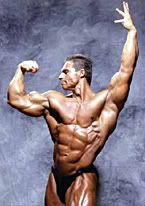

I like the laces on the front of the glove coukld tighten up as a six-pac?

Glove Character: Boxing Glove


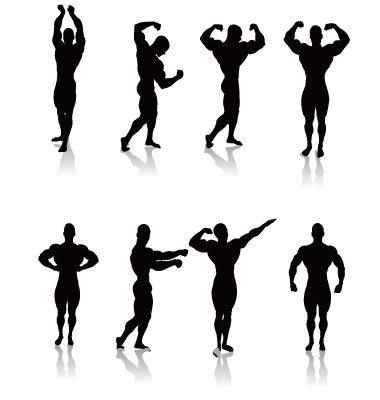
Not forgeting!!! Arnold Schwarzenegger :)
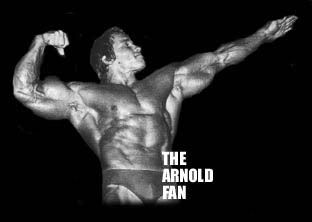
Subscribe to:
Posts (Atom)

